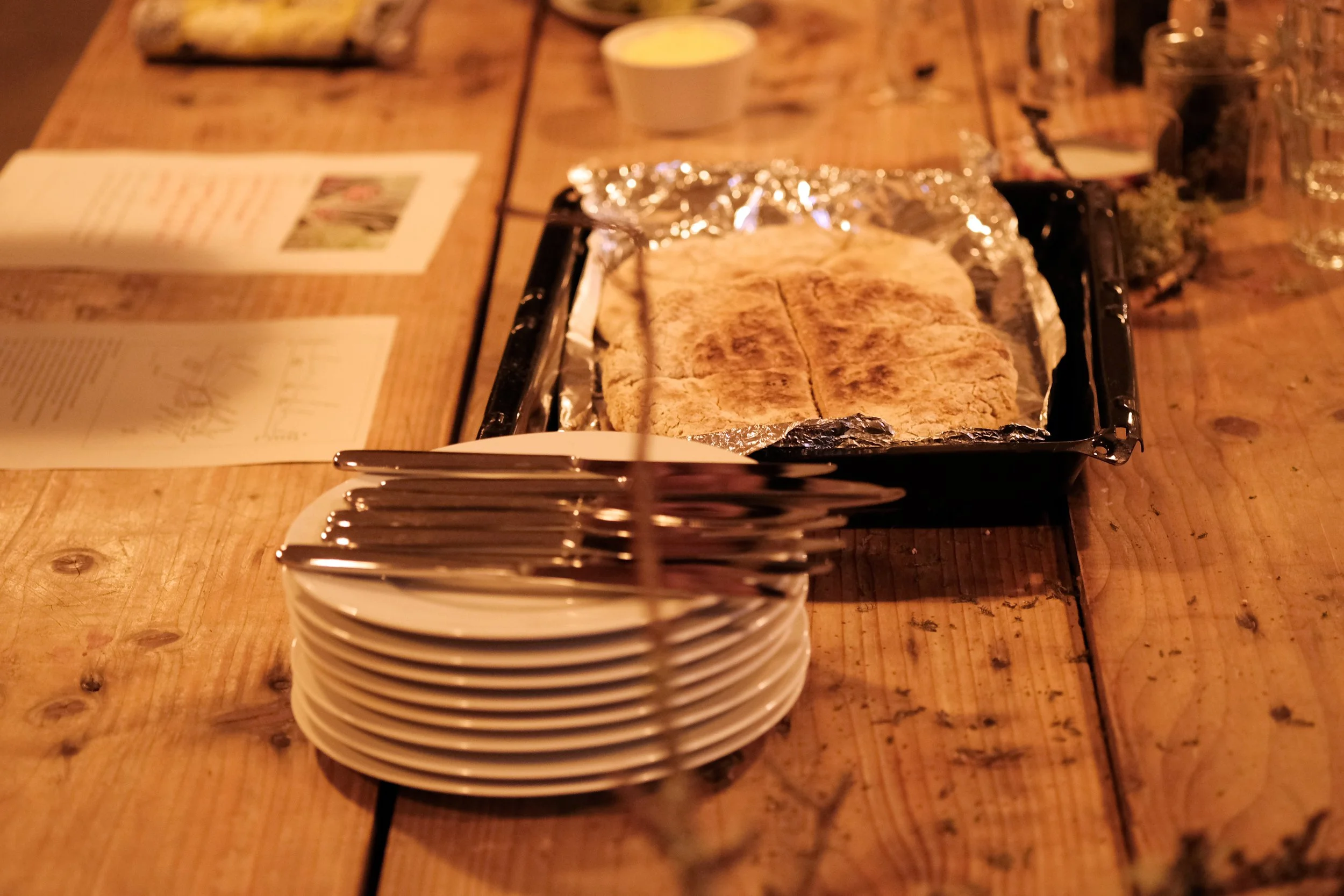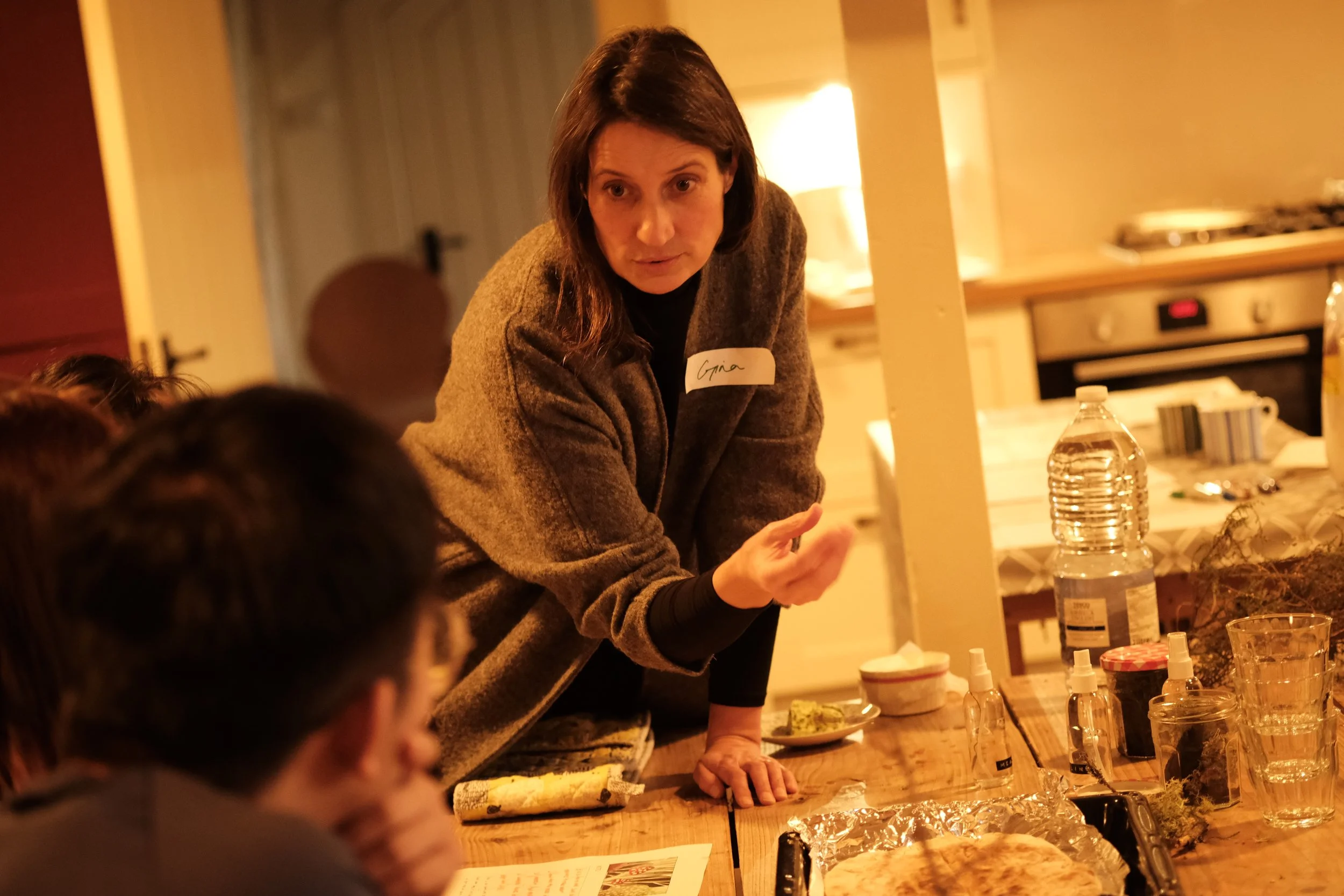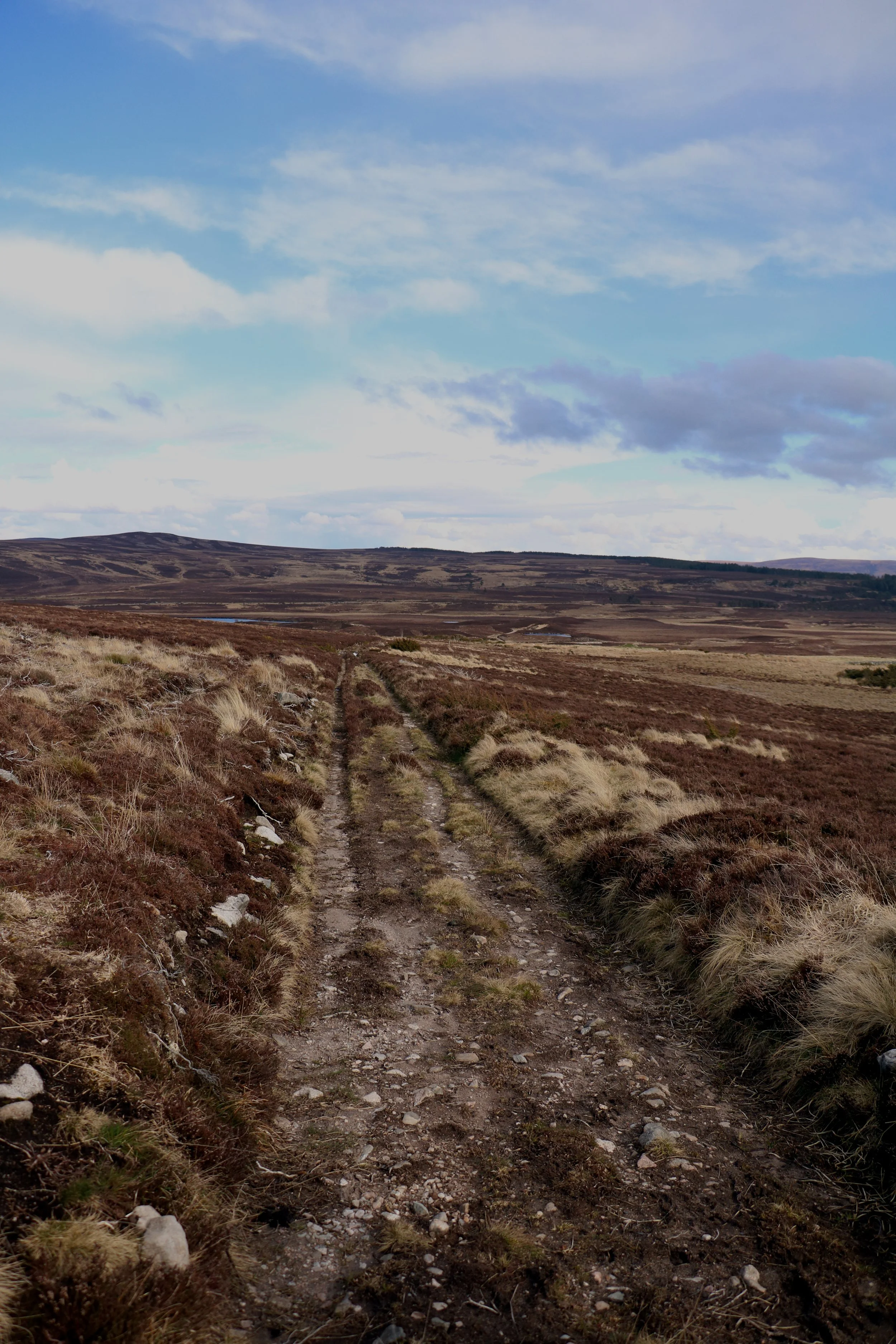
Butter experience
a tasting and teaching experience connecting students to the historical shieling system through butter making & sensory engagement.
Churned Histories
The experience aimed to reconnect students with historical land practices—specifically the shieling systems and seasonal movement of livestock (transhumance)—through the senses. It invited people to experience what it might have been like to live, move, and make food in these traditional ways.
This Butter experience was about using food as a lens to explore how people once lived in rhythm with the land. It used the process of butter-making not just as a culinary act, but as an entry point into a wider cultural system—one shaped by migration, seasonality, and intimate knowledge of the landscape. Through carefully curated smells, tastes, sounds, and textures, participants were encouraged to think with their bodies, not just their minds, and to connect personally with unfamiliar histories.
Rather than simply learning about transhumance or shieling life, the workshop offered a chance to feel it—through smoke-scented air, herb-rich butter, the warmth of bannocks, and the stories embedded in the land. It created space for curiosity and memory, and for reimagining how traditional food cultures might inform more grounded, seasonal, and place-based futures.
design approach
The experience was shaped through four interconnected sensory landscapes:
Smellscape: Participants moved through a sequence of smells that echoed the journey from lowland to high pasture—earthy soil, herbaceous meadows, musty peat smoke, and hawthorn charcoal.
Tastescape: Experiential butter-making using seasonal and native herbs like sorrel, oakmoss, and yarrow seeds. Traditional food elements like bannocks and acorns supported a layered taste of the past.
Spacescape: A reimagined shieling space encouraged physical movement and embodied the journey taken across the landscape. Tactile tablescapes helped participants engage through touch.
Soundscape: Narrative storytelling carried participants through time, blending present and past, creating emotional resonance and imaginative engagement.
The experience was designed for students unfamiliar with the cultural context. It made abstract ideas—like seasonal land use, cultural food practices, and landscape change—tangible, enjoyable, and emotionally engaging. Participants were encouraged to be curious, to explore, and to connect personal memories with cultural and environmental histories.






SHIELIN-BOUGH PROJECT
This led to the design of a publication for shielin-bough an artic connections funded student project between Glasgow School of Art and University of Lapland.
TEAM
Project Lead & Artist – Dr Gina Wall
Design – Gabby Morris
